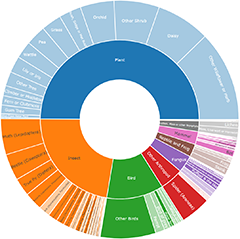Daisies
Announcements
There are currently no announcements.
Discussion
Mike
wrote:
5 Oct 2025
Photo added showing immature seeds on 1mm grid, matching description of C. preesianus.
Cymbonotus preissianus
KylieWaldon
wrote:
5 Oct 2025
HI miranda. I think this is some kind of daisy. Plants, Daisies. :)
Cymbonotus (genus)
waltraud
wrote:
28 Sep 2025
It seems there is a rabbit warren under them fallen tree.
Silybum marianum
Significant sightings
- Leptorhynchos elongatus at Tennent, ACT
- Rutidosis leptorhynchoides at Lake George, NSW
- Leptorhynchos elongatus at Cotter River, ACT
- Ammobium craspedioides
- Leucanthemum vulgare at Scullin, ACT
- Ozothamnus rosmarinifolius at Cotter River, ACT
- Ozothamnus rosmarinifolius at Tharwa, ACT
- Senecio madagascariensis at Goulburn, NSW
- Ozothamnus rosmarinifolius at Tennent, ACT
- Rutidosis heterogama at Yuraygir, NSW
Top contributors
- trevorpreston 1.2K
- Tapirlord 1.1K
- Mike 1.1K
- MichaelBedingfield 782
- sangio7 422
- ConBoekel 411
- NedJohnston 384
- JaneR 329
- MichaelMulvaney 319
- BettyDonWood 281
Top moderators
- Tapirlord 5.9K
- MichaelMulvaney 3.2K
- MichaelBedingfield 1.4K
- BettyDonWood 1.2K
- natureguy 1K
- RWPurdie 408
- plants 248
- Csteele4 219
- Venture 204
- Mike 196







































































































